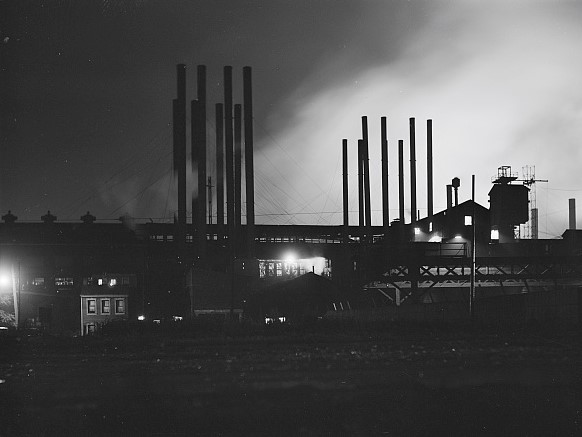
Beyond the politics of nostalgia: What the fall of the steel industry can tell us about the future of America
The future arrived in Pittsburgh in the 1980s. We just didn't recognize it. On deindustrialization, reindustrialization, the rise of Trump and the promise of a sustainable new economy.
In 1973, the United Steelworkers union and the major steel producers negotiated one of the most generous labor contracts in U.S. history, making American steelworkers among the highest paid industrial workers on the planet.
A decade later, many of the beneficiaries of that agreement were out of work.
Beginning in the late 1970s, and accelerating throughout the 1980s, the steel industry in my hometown of Pittsburgh (and beyond) collapsed. Between 1980 and 1983, roughly 95,000 manufacturing jobs were lost in and around the Pittsburgh area. Mills that had employed thousands of people, providing a pathway to middle class status for generations, closed up shop, most of them permanently.
What happened between 1973 and 1983 that changed the fortunes of steelworkers – and of the cities and towns that lived and died by the steel industry? And why does it matter today?
I find myself coming back to these questions over and over again these days. It started during the 2016 election, when some of my friends and family from Pittsburgh boarded the Trump train, helping to put him in the Oval Office. I revisited it again during last fall’s autoworkers’ strike – another battle to preserve (or, perhaps, reclaim) – middle class status for workers in a bedrock American industry that is increasingly failing to keep up with the times. It continues to gnaw at me as the United States deepens its commitment to “industrial policy” in response to climate change and the rise of China to global manufacturing dominance.
It’s become clear to me that we have never fully and honestly come to grips with how and why the steel industry – and other manufacturing industries that served as engines of broad-scale middle-class prosperity in the postwar period – died. That failure continues to haunt our politics, leaving us vulnerable to decision-making guided as much by economic nostalgia as by a clear vision of the challenges and opportunities of the future.
Leaders on both sides of the political divide continue to act as though American manufacturing can play the role in the 21st century that it played in the 20th – as a vehicle for mass upward mobility and middle-class status. They act this way even though the same forces that took out blue-collar workers in the 20th century are gearing up to threaten white-collar and service jobs in the 21st.
If we want to be ready for what is coming next in America – both its peril and its possibility – we need to identify and understand those forces. And there is no better place to start than by looking at what happened in western Pennsylvania in the 1980s.
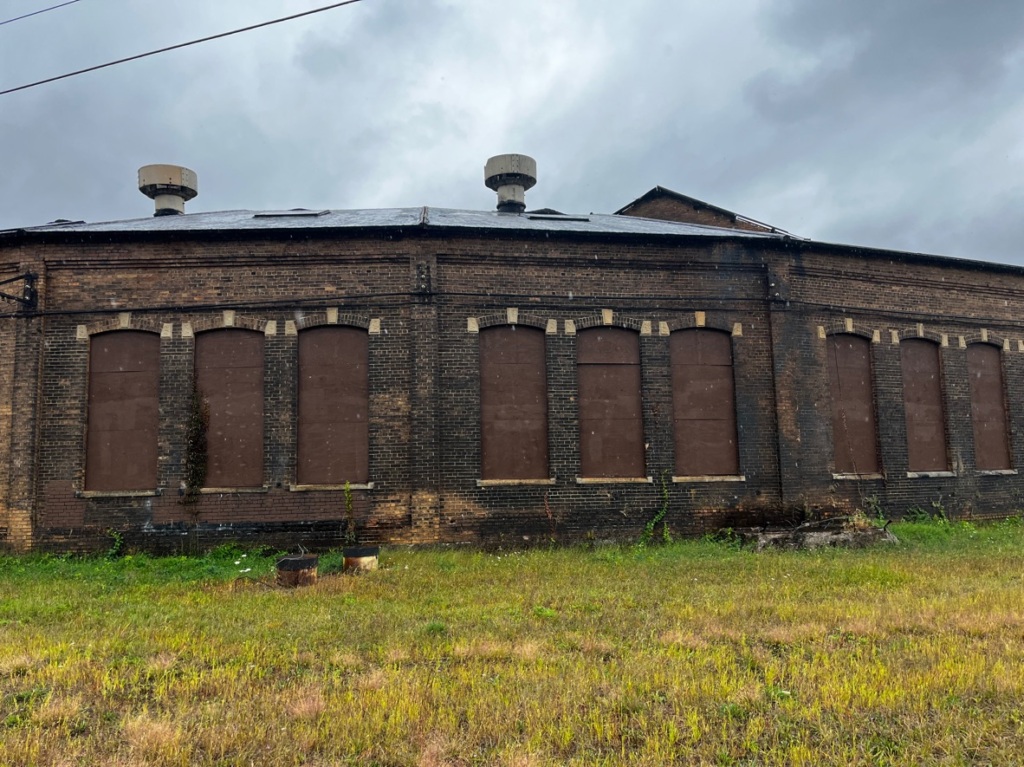
Remnant of the former National Tube Works plant in McKeesport, PA. The plant closed in 1987.Photo by Tony Dutzik | TPIN
What happened to the steel industry?
It is no coincidence that one of the most lucrative labor contracts in U.S. history, the Steelworkers Experimental Negotiating Agreement, was agreed to in 1973. That year is now recognized as having marked the end of the postwar economic boom – a period of extraordinary economic growth in the United States and around the world. It is a period looked back upon nostalgically by both the American right and the left – by the right, as a time of economic self-sufficiency, American global dominance and stay-at-home moms; by the left, as a time of broad middle-class prosperity, labor strength, rising social equality and growing ambitions for the role of the welfare state in society.
During the postwar years, a rebuilding, modernizing world could not get enough steel. Between 1950 and 1960, the amount of steel produced worldwide nearly doubled. By 1980, it nearly doubled again. America and the world saw a burst in the production of infrastructure and consumer goods the likes of which the planet had never seen, much of it – from cars to appliances – made with steel.
Developing nations – first a recovering Japan, and later Brazil and South Korea – began to establish steel industries during this period with dramatically lower labor costs, gradually eating into American steelmakers’ market share. But a gradually declining share of a rapidly growing market is still a pretty good place to be, and American steelmakers still found buyers for all the steel they could possibly produce.*
The steelmakers’ biggest concern at the time was avoiding labor unrest that would shut down the mills and prevent them from getting steel out the door. And so, culminating in the 1973 agreement, the steel industry and steelworkers negotiated a series of increasingly lucrative labor contracts, with steelmakers simply passing the added costs along to their customers.
Then, starting in the 1970s, the bottom fell out.
Slowing demand, fewer workers
Ask people who lived through the 1980s in Pittsburgh who was to blame for the steel industry’s collapse and you’d get a range of different answers – Reagan, the unions, the Japanese, the steel companies themselves. But beneath the surface, two big things were happening that sooner or later would have sealed the fate of the industry as it had come to exist in places like Pittsburgh in the 20th century.
The first was a slowdown in demand.
After roughly doubling in the two decades before 1980, global demand for steel increased by only 18 percent between 1980 and 2000. It wasn’t until the surge in steel demand in China around 2000 that steel production worldwide (met, in large part, by production in China) began to spike again.
Why did demand for steel stall? A big factor was that the breakneck growth in demand for cars, appliances and infrastructure in the postwar years flattened out. By 1980, 87% of American households had a motor vehicle and more than half had two or more. People might need to replace those vehicles as they wore out (which the automakers made sure happened quickly), but the surge in new demand was over.
In addition, the 1980s saw the beginning of a transition away from producing steel from iron ore and coal – the so-called “primary” steelmaking that made western Pennsylvania famous – and toward the manufacture of steel from scrap in efficient, less labor-intensive “mini mills.” Recycling, basically. Today, 30% of steel manufactured worldwide is steel we’ve already made and used at least once.
After decades of riding the wave of ever-increasing demand (and decades of increasingly protectionist trade policy), U.S. steelmakers actually had to face competition in a suddenly stagnant market. They couldn’t.
But even if the steel industry could have positioned itself to compete by investing in modern equipment, the industry would not have been able to play the same role in western Pennsylvania that it had for decades – as a never-ending source of good-paying blue-collar jobs.
The reason: increasing productivity.
Between 1919 – roughly the time when the last of my great-grandparents emigrated to the region – and 1955, the amount of steel that could be produced by a single U.S. production worker in an hour more than quadrupled. Those productivity gains have continued into recent years – between 1990 and 2021, steel mill employment in the United States fell by 58%, while productivity more than doubled. In other words, American steel mills now produce roughly the same amount of steel with only half as many workers as they did in 1990 – and many, many times fewer workers than they did during Pittsburgh’s industrial heyday. All told, about one-eighth as many people work in the U.S. steel industry as did in the 1950s.
It is unlikely, at least in the current economic paradigm, which rewards gains in efficiency and allows (somewhat) free competition across borders, that the genie of mechanization and automation can be put back in the bottle. Nor is it a wise idea (or even a possible one given environmental constraints) to rely on stoking ever-growing demand for material goods to employ the people otherwise dislocated by automation.
The forces that steadily undermined the steel industry as the economic foundation of western Pennsylvania’s economy continue to grind away. So, why do so many of our leaders continue to pretend they don’t?
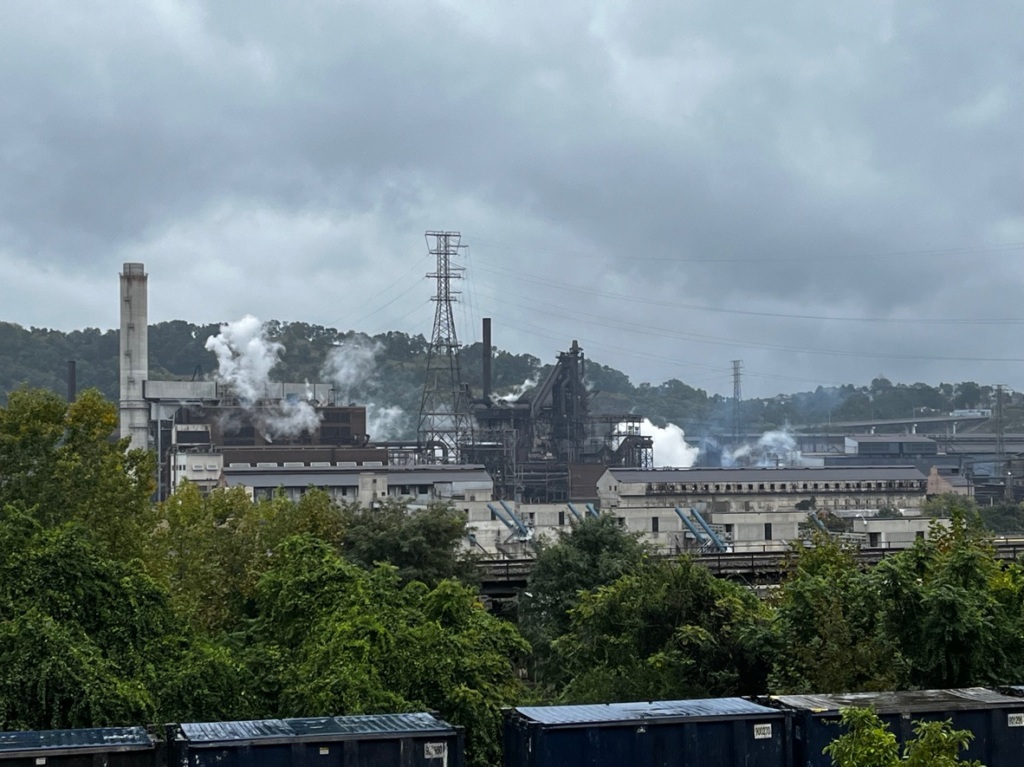
The Edgar Thomson Plant in Braddock, PA, part of U.S. Steel’s Mon Valley Works, the last integrated steel mill in the Pittsburgh area. Mon Valley Works currently employs 3,000 people, a tiny fraction of the tens of thousands who once worked in the region’s steel mills.Photo by Tony Dutzik | TPIN
Economic nostalgia
In 1950, 32% of all U.S. employees worked in manufacturing. By 2019, the share had fallen to 8%.
In the popular political imagination, the decline in industries that had once employed large numbers of Americans – from steel to electronics to automobiles – is the result of competition from lower-cost producers overseas. And that has certainly played a big role. But there is no country in the world today – not even China, which has been engaged for the last several decades in its own version of the western world’s postwar building binge – that employs as great a share of the population in manufacturing as the U.S. did in the 1950s.
Yet, the idea that public policy can bring back some semblance of the golden days continues to persist, despite decades of failed economic development schemes aimed toward attaining the holy grail of “good jobs.”
For the American left, government incentivization of industry (e.g. through green industrial policy) plus unionization is seen as the path back to the “promised land” of broadly shared prosperity. For the right, unfettering industry from the shackles of oppressive regulation while (in the Trump era, anyway) providing protection against imports from geopolitical rivals is the magic ticket. Both sides pull out slogans that harken back to the past – the Green “New Deal”, Make America Great “Again” – to rally the public.
Both of these approaches, however, have big problems. The Green New Deal is victimized by its own internal contradictions – that jobs building clean energy can be both more numerous and more lucrative than the dirty jobs they replaced without jeopardizing the competitiveness of those very clean energy technologies against both fossil fuels and foreign producers. As the pushback among some autoworkers to vehicle electrification shows, the current economic and social paradigm will always force choices between maintaining existing jobs and transitioning to newer or more efficient technologies. Green New Dealers attempt to solve these problems through the application of large amounts of public money, the supply of which is assumed to be infinite.
Meanwhile, Trump’s politics of nostalgia – of bringing back coal, keeping Detroit pumping out gasoline-powered muscle cars, crushing imports through punitive tariffs, and building walls around the country – is unlikely to produce a return to America’s industrial grandeur of years gone by. But even if it did, it would come at great cost, leaving the nation more isolated, more technologically backward, and with a more badly degraded environment than needs to be the case.
As if that’s not enough nostalgia-wise, the world’s nations now find themselves in a form of economic Cold War with China at the center. Echoing Soviet leader Nikita Kruschev’s Cold War threat that “we will bury you,” China is now seen as threatening to bury the West in cheap electric vehicles, batteries and solar panels in order to keep its own factories humming and its economy afloat. Leaders in the United States and other western nations are responding to concerns about manufacturing overcapacity in China by … adding even more manufacturing capacity, again, heavily subsidized by taxpayers.
That may be an important, perhaps necessary, step for a variety of reasons. But to a western Pennsylvanian, it’s reminiscent of the region’s too-late attempt to diversify its industrial base by luring an auto manufacturing plant (eventually run by Volkswagen) to the area in the 1970s. The plant – which received lucrative local and state subsidies, money that could have been allocated to a vast array of other public purposes – never met its initial grandiose expectations for job creation and shut down a mere decade later. It’s a “smokestack chasing” strategy that’s been employed by local and state governments in the Rust Belt and beyond for decades – rarely with lasting success.
Just because you build a factory doesn’t mean it will succeed. Success within the current economic paradigm depends either on a) technological innovation that enables American manufacturers to build better, more desirable products than their rivals (a pathway that would require U.S. manufacturers to catch up to what appears to be a clear Chinese technological lead in sectors such as vehicle electrification); b) a laser-like focus on reducing costs (a difficult pathway if the Green New Deal is to fulfill its promises to labor without gutting environmental protections), c) protectionism that leads to American consumers having more limited and more costly options for technologies and products that advance the energy transition; or d) eternal and likely ever-increasing levels of public subsidy.
The politics of nostalgia allow us to pretend that these are choices that don’t have to be made by harkening back to the one period in history – the immediate post-war era – when they (mostly) didn’t have to be. Blurring policy goals and avoiding hard choices may make it easier to win policies like the industrial subsidies in the Inflation Reduction Act, but it will not help to sustain them. When the inevitable happens – when inflation rears its head, or when U.S. manufacturers come back to the government for another round of bailouts, or when policy-makers have to choose between allowing Americans to buy cheap, advanced clean energy products from abroad or throwing up barriers to prop up domestic industries – our failure to articulate tensions and tradeoffs will leave advocates and the public without the language to understand what is happening or the tools to respond.
I do not know how to resolve these predicaments. I do know that any durable solution will require two things: Understanding what happened in the past, and establishing clear priorities for the future.
A new politics for a new era
The alternative to a politics of nostalgia is a politics that finally – after more than 40 years – internalizes the fact that the mid-century America of both the right and the left’s imagination, along with the conditions that enabled it to come into being, are not coming back.
This will not be easy, as it suggests that we’ve entered a region of history without a good map. The politics of nostalgia are much more comfortable, much easier to explain to the public.
But making that acknowledgement also gives us space to recall the ways in which the mid-century American economic “ideal” wasn’t … and chart a future course that transcends rather than recreates the problems of the past.
The other thing that Pittsburgh was most known for in the 20th century, besides steel, was pollution. At times, air pollution in the region reached levels that were literally and immediately lethal – at other times, the impact of constant exposure to industrial pollution could be counted in illness and lives cut short too early. (This pollution continues today.) And yet, none of us at the time I was growing up had even the slightest thought that pollution from industry would alter the climate in ways that would ultimately wind up to be catastrophic and irreversible.
The stakes involved in how we produced the things we used were high then. They are much higher today, as the fate of both the global climate and the critical and unique ecosystems that are potentially threatened by both the old and the new energy economies hang in the balance.
It is also worth remembering that mid-century industrial prosperity came at the expense of a host of other possible aspirations among its participants. I think of the men in my family and people I’ve met through the years who might have been artists, or writers, or spent more time taking care of a loved one, or created something entirely new of their own devising, but who instead spent their years as cogs in somebody else’s machine because the money was too good to pass up.
We now have the capacity – thanks in part to the very improvements in technology that render our former economy obsolete – to build a new economy that does not require the destruction of the environment, allows for the fulfillment of a far greater variety of human aspirations, and still overcomes material scarcity.
Building that economy and society starts with abandoning concepts of economic development that are no longer beneficial and no longer work, freeing up time, imagination and resources to prioritize more important needs and take advantage of greater opportunities.
Making that transition does not resolve the question of how to actually build the stuff we need to make the clean energy transition. That is an important and difficult challenge worthy of policy response. But a post-nostalgia politics would enable us to focus on that challenge as a challenge worthy of solution in and of itself, without also hanging upon it the responsibility for restoring a mid-20th century ideal of American prosperity that wasn’t all that ideal and is no longer available to us anyway.
“They begin to insert ideas of their own”
One of the most demoralizing things about growing up in 1980s Pittsburgh was the fact that the institutions that one would have expected to explain what happened – the government, academia, the churches, the unions, the corporate world – failed to do so.
It’s not that there weren’t some who saw at least pieces of the bigger picture. Civic leaders made plans for what a “post-industrial” future for the region might look like (some of which actually came to pass). Rank-and-file workers writing in publications like the Mill Hunk Herald, processed their experiences and imagined alternative futures, from the intriguing (such as repurposing the mills to build railroads and mass transportation vehicles) to the absurd (converting an abandoned mill into a theme park called Mill World).**
But beyond the boardrooms and the fringes, there was never a clear and coherent explanation of exactly what had happened and why. Not only that, but many of the existing institutions had all the incentive in the world to pretend that what was obviously happening wasn’t – the steel manufacturers to pretend that doomed plants remained viable in order to wring more concessions from workers, the unions to preserve a sense of their own relevance, everyone else to avoid having to deal with the magnitude of the dislocation. As one Mill Hunk Herald contributor wrote in 1980, “The blue collar worker finds himself (or herself) in an economic house of mirrors trying to discern which solutions are real and which are imaginary. [W]e are led to believe it is just a passing phase.”***
In researching this piece, I came across a telling quote from a former longshoreman and autoworker in a 1987 Los Angeles Times story looking back on the steel industry’s demise: “The more people feel there is an abdication at the top, the more they begin to insert ideas of their own, trying to structure their experience and make some sense of it.”
In the 2016 election, my home region provided the margin of victory for Donald Trump. Trump was, and is, a buffoon, besides being dangerous and anti-democratic, but one of his great political skills is in providing ways for people who perceive themselves to have been on the downside of the economic and societal transitions affecting America over the last several decades to “structure their experience and make some sense out of it.”
That mainstream leaders across the political spectrum have failed to do that – have failed to provide more cogent and compelling ways for people to “make sense” of their experience of the modern economy (and modern society) is, I think, no small contributor to the overall loss of legitimacy of our institutions, and the crisis in our politics.
Nothing about our current moment in history – the rise of automation, the rise in inequality, the growing salience of environmental challenges and limitations, the crisis of meaning and happiness in America – suggests that any of this is going to get any easier. In the absence of any better explanation of how the world works, people will inevitably turn even more aggressively to what they believed had worked in the past, or to someone who can weave together a story – even if that story is a fairy tale – that makes it all make sense.
In 1980s Pittsburgh, most of us lacked the language, understanding and tools to anticipate the upcoming calamity and come to grips with what it would take to build a different future. While Pittsburgh has recovered to some degree from the shocks of 40 years ago – it is a greener, cleaner and more vibrant city in some ways than ever, a shining example of “post-industrial” transformation – it is also a much smaller and vastly more unequal city than it once was, and the scars of deindustrialization are still present in formerly industrial towns throughout the region.
It is, in other words, a microcosm of America – an America built by people who once dug coal and poured molten metal, now facing a future for which there is no map … one in which following the old maps that once seemed reliable will only result in us getting more and more lost.
* Much of the background in this section was informed by John Hoerr’s excellent and exhaustive 1989 book, And the Wolf Finally Came, which detailed the history of steel’s demise in western Pennsylvania (and which the UAW strike led me to re-read). Hoerr’s thesis was that the severity of steel’s collapse might have been ameliorated by more constructive relations between management and labor, a thesis that I very much wish to be true but, given the overwhelming power of the other forces at play, I am not sure I entirely believe.
** Absurd, maybe, but a similar idea was tried in Flint, Michigan, with the “Auto World” theme park. It closed after six months.
*** Mill Hunk Herald excerpts from Overtime: Ten Years of Punchin’ Out with the Mill Hunk Herald.
Topics
Authors
Tony Dutzik
Associate Director and Senior Policy Analyst, Frontier Group
Tony Dutzik is associate director and senior policy analyst with Frontier Group. His research and ideas on climate, energy and transportation policy have helped shape public policy debates across the U.S., and have earned coverage in media outlets from the New York Times to National Public Radio. A former journalist, Tony lives and works in Boston.
Find Out More

Bumbling toward utopia
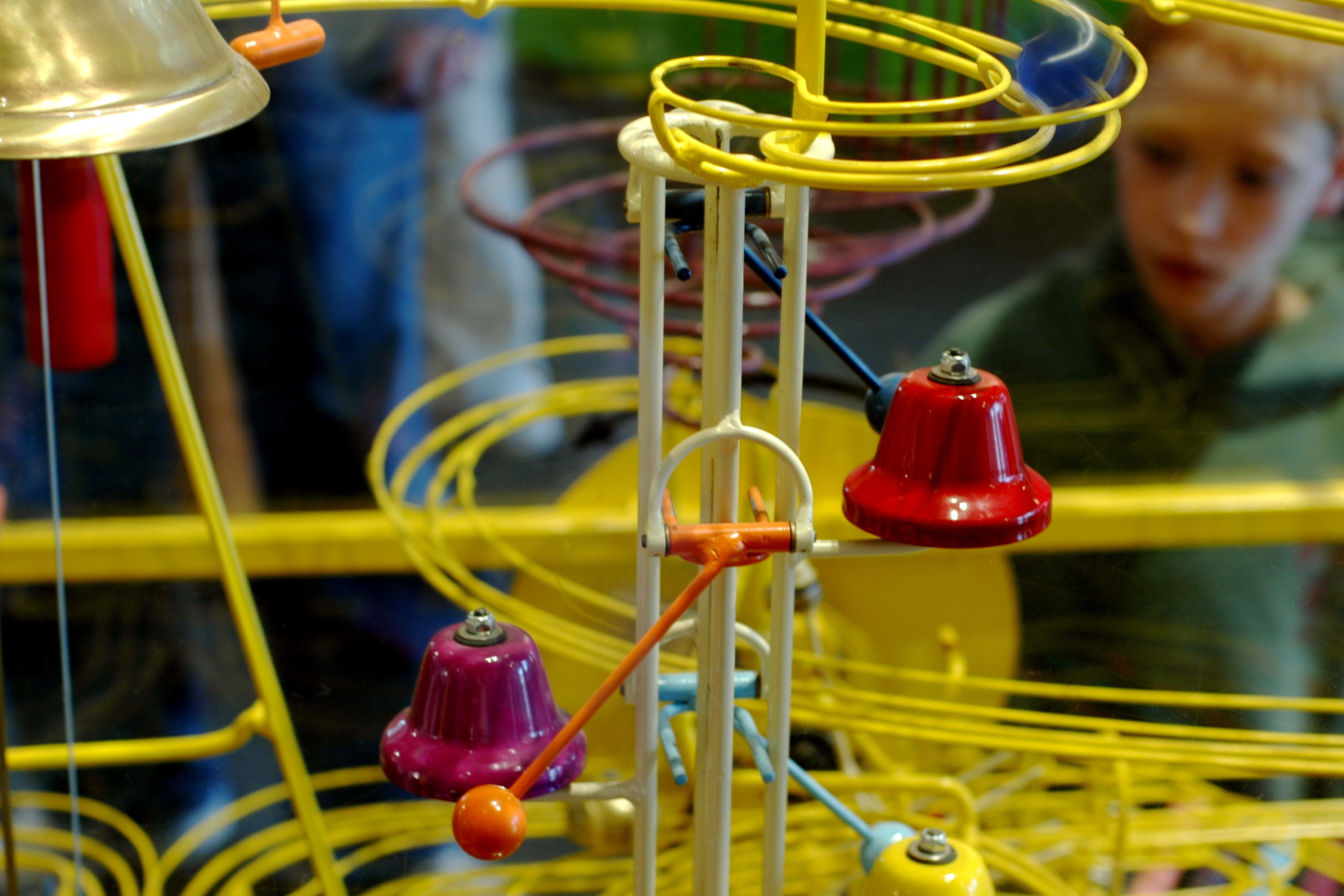
What’s wrong with the systems we rely on?
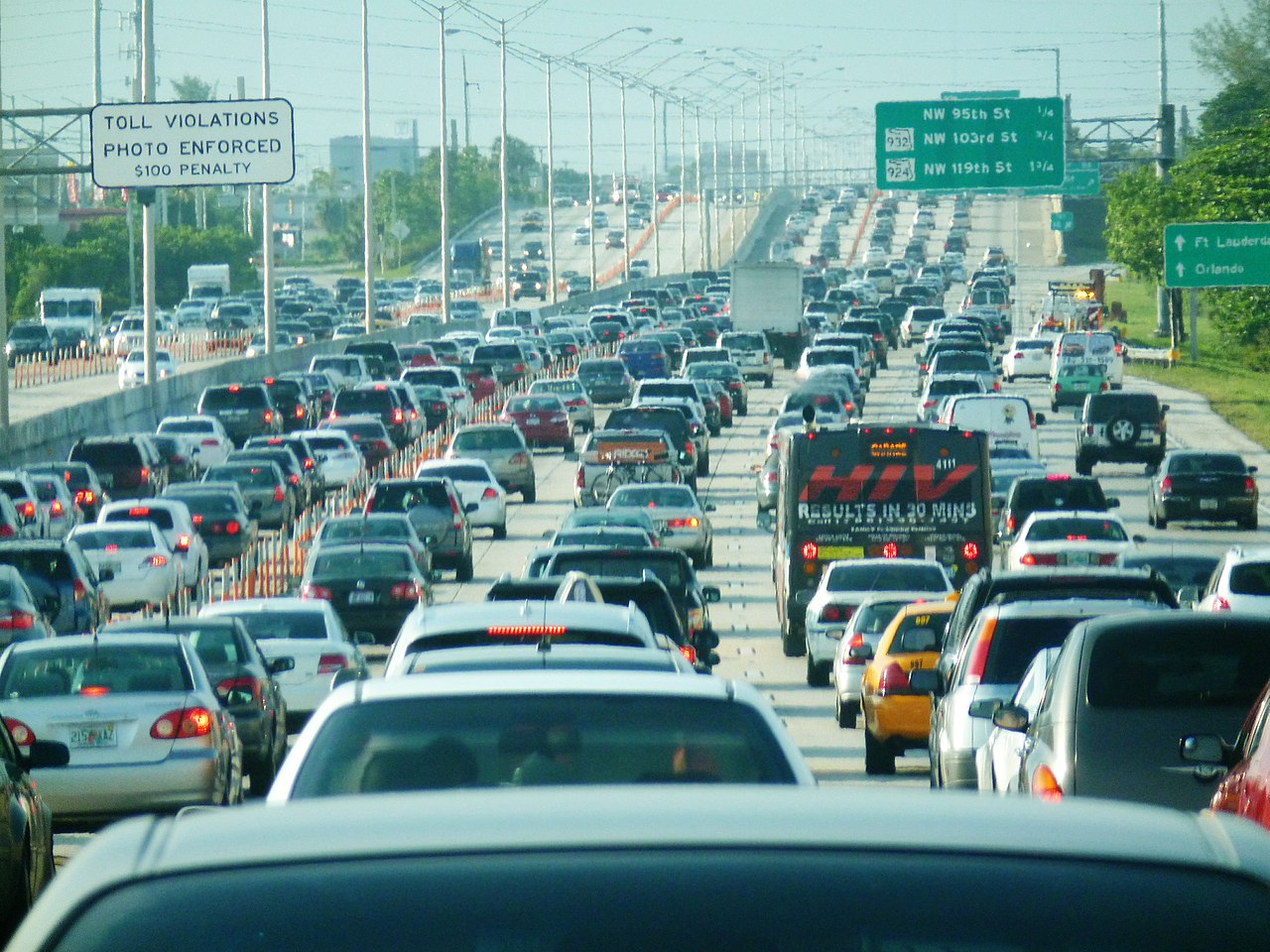
More driving doesn’t make America better off


